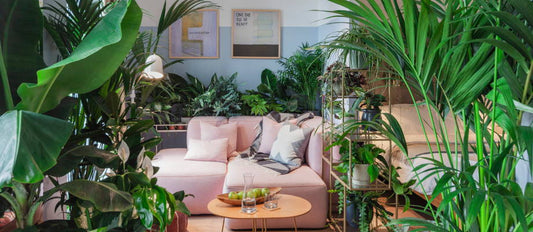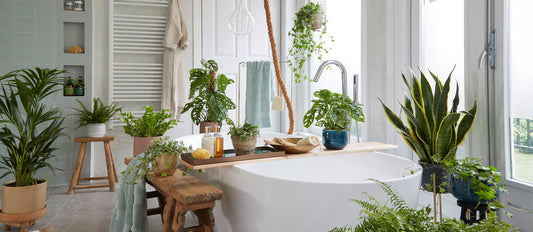The Caladium is famous for its large, heart-shaped leaves in lovely combinations of white, green, pink and red, with beautiful leaf patterns that make it a real one of a kind. The Caladium also has an interesting growing process. Our blog tells you everything that you need to know about this beauty.
1 — Origin
The Caladium originally comes from Central and South America, so it is a tropical plant through and through. Over the years, the Caladium has also found a home in Asia, as it also thrives in the tropical regions there. The Caladium is also known as the elephant's ear or angel wings.
2 — A genuine tuber plant
The Caladium grows from a tuber, so it stores its nutrients in its root or stem — unlike plants that grow from bulbs, which store their nutrients in the underground scale leaves. Another difference between tubers and bulbs is that a tuber will grow multiple shoots but a bulb will only ever grow one.
3 — Deep hibernation
You can also plant the Caladium in your garden; ideally in the shade where it will get some sun every now and then, but definitely not when the sun is at its hottest. The plant will grow well among trees and shrubs as well as in borders, making it the perfect choice to brighten up dark and shady areas of your garden.
6 — Watering
So what should you do once winter begins? You will know when the Caladium enters its dormant period because the leaves will start dying off. Wait until the leaves have fully dried out and then cut them off. Lift the tubers from your garden before the first frost and store them in a dry, cool place indoors, where the temperature will not drop below 12 degrees. If you have a Caladium in a pot, place the Caladium—pot and all—in a suitable position.
In a warmer climate you do not need to dig up the tuber; simply leave it where it is.
8 — When winter is over
After the risk of frosts has passed, you can plant the tuber in the open ground again. This is also the perfect time to propagate the Caladium by cutting a tuber into small pieces — just ensure that each piece has one "eye" or node. The tuber can send out shoots from here, then all you have to do is wait until your garden or living room is festooned in pink.
9 — Exclusive
The Caladium comes in a number of green and pink guises and there are many different varieties! An added bonus is that the names are also fantastic: how about Party Punch, Sunset Pink or Miss Muffet?
The Caladium is a regular part of our range and buying one from us online is easy. You can also rest assured that the quality will be perfect, as we only ship Caladiums if they are in tip-top condition.




